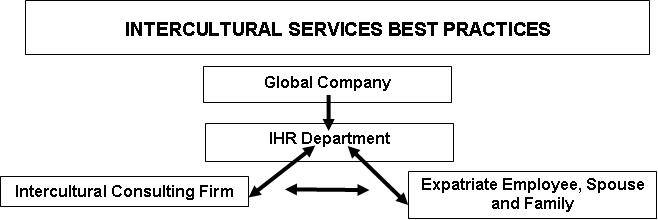 Author:
Author:
Heather Markel – Culture Transition Coaching
Editor’s Note: We are especially pleased to welcome a new Guest Author, Heather Markel, who has shared with us her ten tips for a successful expatriate cultural transition.
A few weeks ago, I shared five tips for helping expats transition to a new culture. This post is a continuation of the previous one, rounding out the ten areas to focus on when transitioning to a new culture for an expatriate assignment.
#6 – Starting All Over
One of the toughest transitions for an expat is adjusting to a new office environment from “square one”. The expat may have held a senior level job in their previous location, and the new job can feel like a demotion. For the accompanying spouse, starting all over can be literal – if they’ve left behind a job or fruitful career, they may have to start a new career, or, in some cases, due to legal restrictions, not be allowed to work at all.
In both cases, it’s imperative that some attention be given to setting expectations. For the expat, this is about an initial period where they observe the office environment, rather than try to exert their own style or behavior on everyone else. For the spouse, expectations should be set around what types of work are permitted. There should also be some support to help spouses with the job or career-search, or on finding something to replace the job they previously held.
#7 – Access to Activities
Transitioning to a new culture isn’t just about the office. Whether single, or with a family, expats need to find fulfilling activities to help them adjust to a new culture. If the expat has moved with their family, then group activities will be important to the success of their overall experience.
Of course, available transportation may impact which activities are accessible, so providing assistance with ideas, or resources, is ideal.
#8 – Changes in the Family
For expats who have traveled with a spouse, it is more than likely the spouse has given up a job or career to follow along. If the non-working spouse isn’t happy, it can have a very negative impact on the overall experience. If the non-working spouse used to be a provider, and is now tasked with looking after the home, or the children, the role change will inevitably impact the family as well. It’s important to have an awareness of the changes, set expectations, and have a set of tools with which to navigate the resentments and challenges that are likely to develop.
#9 – Clothes: What Not to Wear
In many cases, this may be more impactful on women, than on men, but it’s important that a migrating employee understand if there are any cultural dress patterns. First, it’s less likely they will feel like they “stick out like a sore thumb” if they adapt to some of the typical dress codes. Second, there may be instances where the lack of this knowledge could land them in trouble – for example, in cities where women are expected to cover themselves from head-to-toe.
On a more subtle level, Americans tend toward either matching suits, or more casual garments in the office. When going out in the evening, it may be inappropriate to wear jeans. In France, women in the workplace sometimes wear what I’ll call “mismatched suits” – they look impeccably-dressed, even though their skirt does not have a matching jacket. Oddly, it’s not quite business casual; it’s simply a style difference. Going out in the evening, jeans are often acceptable if paired with a nice top.
Another thing I often find humorous is that in France, people always stare at shoes. So, while you might get away with wearing an old, worn-out pair of shoes or sneakers in some countries, you’ll become quickly insecure if you try the same in Paris.
Again, these are very subtle examples, but these small gaps can make all the difference when someone is trying to feel like they fit in to a new culture.
#10 – Eye Contact and Tone of Voice
Two behavioral areas between cultures that deserve attention are eye contact, and tone of voice.
One huge area where eye contact comes into play is on public transportation. For example, in Paris, it seems mandatory to stare at fellow passengers and it can be very uncomfortable the first few times you look up to find someone staring at you, meet their gaze, and find they do not look away. In Tokyo, it’s exactly the opposite experience. Passengers typically avoid all eye contact by pretending to sleep – it’s another jarring experience to see an entire car full of people with their eyes closed.
Finally, the tone of voice with which you speak can often reveal that you are a foreigner. As an American, I know we tend to speak fairly loudly in social situations, especially when dining or drinking. However, other countries lean towards quieter conversations. So keep this in mind and adapt your conversations accordingly.
In Summary
I hope you find these tips, and the ones from my previous article, to be helpful in understanding the challenges that expatriates and their families often face upon arrival in a new country. If you are an HR professional responsible for assisting expatriates with their transitions, be sure to keep these tips in mind.
I am always interested in hearing more tips or experiences. Please share yours as a comment to this post, or contact me directly by email.
More about Heather
 Author:
Author:












You must be logged in to post a comment.